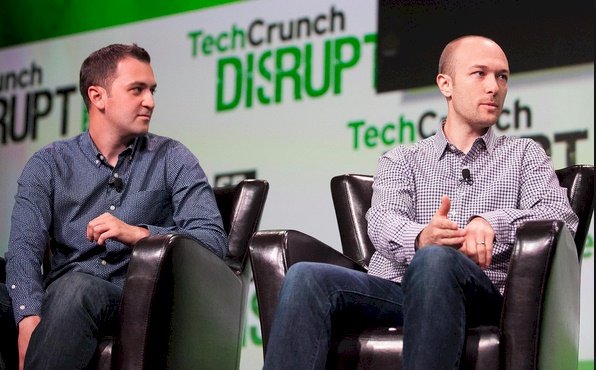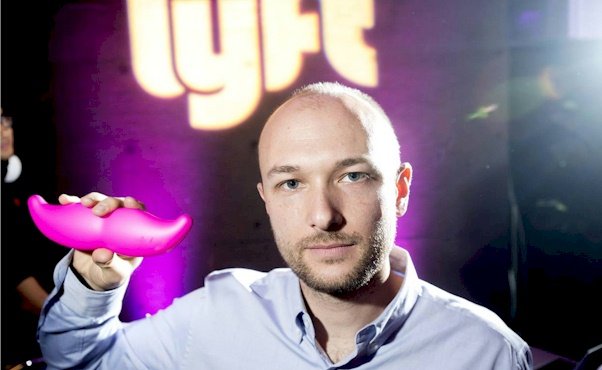A look at the Lyft Logo and the History of the Company
Though Uber may be seen as the king of ride-sharing, a second company was actually the first on the scene – Lyft. In 2016, Lyft saw revenues of $700 million and was well on its way to changing the way the world gets a ride. Thanks to clever marketing and an innovative approach, Lyft has seen massive amounts of growth in recent years, and the company is now nearing profitability. In this article, we’ll take a look at the origins of Lyft as well as the design and history of its unique logo.
Origins of Lyft
 The company that would eventually transition into Lyft – Zimride – was founded by Logan Green and John Zimmer in 2007. At first, Zimride focused on ride-sharing for long-distance trips. In 2012, though, Zimmer and Green introduced Lyft as a service of Zimride that offered ridesharing for much shorter trips. By 2013, the company name was changed to Lyft and the focus shifted almost entirely to short-distance ride-sharing.
The company that would eventually transition into Lyft – Zimride – was founded by Logan Green and John Zimmer in 2007. At first, Zimride focused on ride-sharing for long-distance trips. In 2012, though, Zimmer and Green introduced Lyft as a service of Zimride that offered ridesharing for much shorter trips. By 2013, the company name was changed to Lyft and the focus shifted almost entirely to short-distance ride-sharing.
The model for Lyft involved hiring drivers to use their own vehicles to transport passengers. After the ride, the passengers would automatically have their Lyft account debited for the cost of the ride. 80% of the money would go to the driver, and Lyft kept the remaining 20%.
 As part of their marketing, Lyft had drivers outfit the front of their vehicles with a fuzzy pink mustache. Passengers were also encouraged to sit in the front seat of the vehicle and fist-bump the driver when they got in. Later, Lyft would introduce a color-changing dashboard indicator and a mustache shaped light that drivers put on the front of their vehicle in place of the fuzzy pink mustache. All of these things created an experience different from the typical taxi experience and helped set Lyft apart from the competition.
As part of their marketing, Lyft had drivers outfit the front of their vehicles with a fuzzy pink mustache. Passengers were also encouraged to sit in the front seat of the vehicle and fist-bump the driver when they got in. Later, Lyft would introduce a color-changing dashboard indicator and a mustache shaped light that drivers put on the front of their vehicle in place of the fuzzy pink mustache. All of these things created an experience different from the typical taxi experience and helped set Lyft apart from the competition.
By January 2017, Lyft announced that it would add 100 US cities to its list of cities served, bringing the total 300 US cities. While Lyft has faced some regulatory challenges, they have managed to overcome these to become a company currently valued at $7.5 billion.
Throughout Lyft’s short but success-filled history, clever marketing and a unique approach to ridesharing have been instrumental in growing the Lyft brand, and to that end, the company’s recognizable logo has played a major role in their success.
Looking For a Logo Designer?
Thousands of businesses have trusted LogoMyWay with their logo design. We have thousands of logo designers ready to work on your new logo.
History of the Lyft Logo
The original Lyft logo was actually born out of a partnership between a friend of the company’s founders named Ethan Eyler. At the time, Eyler was running a company that sold large, fuzzy pink mustaches that attached to the front of a vehicle. Zimmer and Green started out giving away the mustache ornaments at Lyft events, and soon the fuzzy pink mustaches became an inseparable part of the Lyft brand. Shortly thereafter, the Lyft logo featured the recognizable mustache design.
“There was something that was really uplifting about seeing this thing on a car,” Zimmer said about the mustaches in an interview with Inc., “It brought smiles to peoples’ faces.”
“It’s part of the fun; it’s part of the whimsy. It’s trying to get people to smile. Even if a driver won’t put it on his car, he’s probably smiling about it and talking about it,” Zimmer continued, “The mustache is actually a symbol of trying to connect and to have fun.”
Eventually, the Lyft logo would drop the mustache, though they can still be found adorning many Lyft vehicles, and the Lyft logo still features its iconic bright pink color and bubble letter font.
Design Elements of the Lyft Logo
 Lyft wanted to brand themselves as a fun, hip alternative to taxis, and part of doing this was designing a logo that was bright, fun, and comical.
Lyft wanted to brand themselves as a fun, hip alternative to taxis, and part of doing this was designing a logo that was bright, fun, and comical.
The color pink is also significant for Lyft as they try to convey that they are very friendly towards female drivers and passengers alike. Lyft wanted to shift away from the masculine designs typically used in the transportation industry, and a pink logo with bubble letters was the perfect way to do this.
The popularity of the Lyft Logo
Lyft’s unique branding has played a monumental role in its success. In little time at all, the bright, fun Lyft logo was immediately recognizable, and any vehicle with a pink mustache on its grill could be identified as a Lyft vehicle. The Lyft logo was different in a good way, and this helped set the company apart in the eyes of its customers.
As Lyft began to shift into offering premium, black car ride services, they did start to make the bright pink mustache a little more discreet. The fear was that a person showing up at an important business meeting wouldn’t want to arrive in a car that had a large, pink mustache on it. To combat this, Lyft introduced a light in the shape of a mustache that they called the “glowstache” and also made the mustache smaller. Nevertheless, the pink mustache remains an important part of Lyft’s branding and is featured in some form or another on almost every Lyft vehicle.
In an industry dominated by no-nonsense, masculine designs, Lyft decided to bump the trend and make a splash. It was a decision that has worked well for the company as customers were attracted to the fun and light-hearted spirit that is at the forefront of Lyft’s branding.
In addition to redefining the branding of a transportation company, the Lyft logo has also helped the company reach out to female customers and drivers, making them feel welcome and secure inside a Lyft vehicle.
Sometimes, industry trends are meant to be broken, and the Lyft logo does just that. Though many factors have played into launching Lyft into a multi-billion dollar company, Lyft’s fun logo and unique branding were certainly part of that approach, and the history of the Lyft logo and the success that it has brought them are testaments to the difference that a great logo and great marketing can make in a competitive market.








